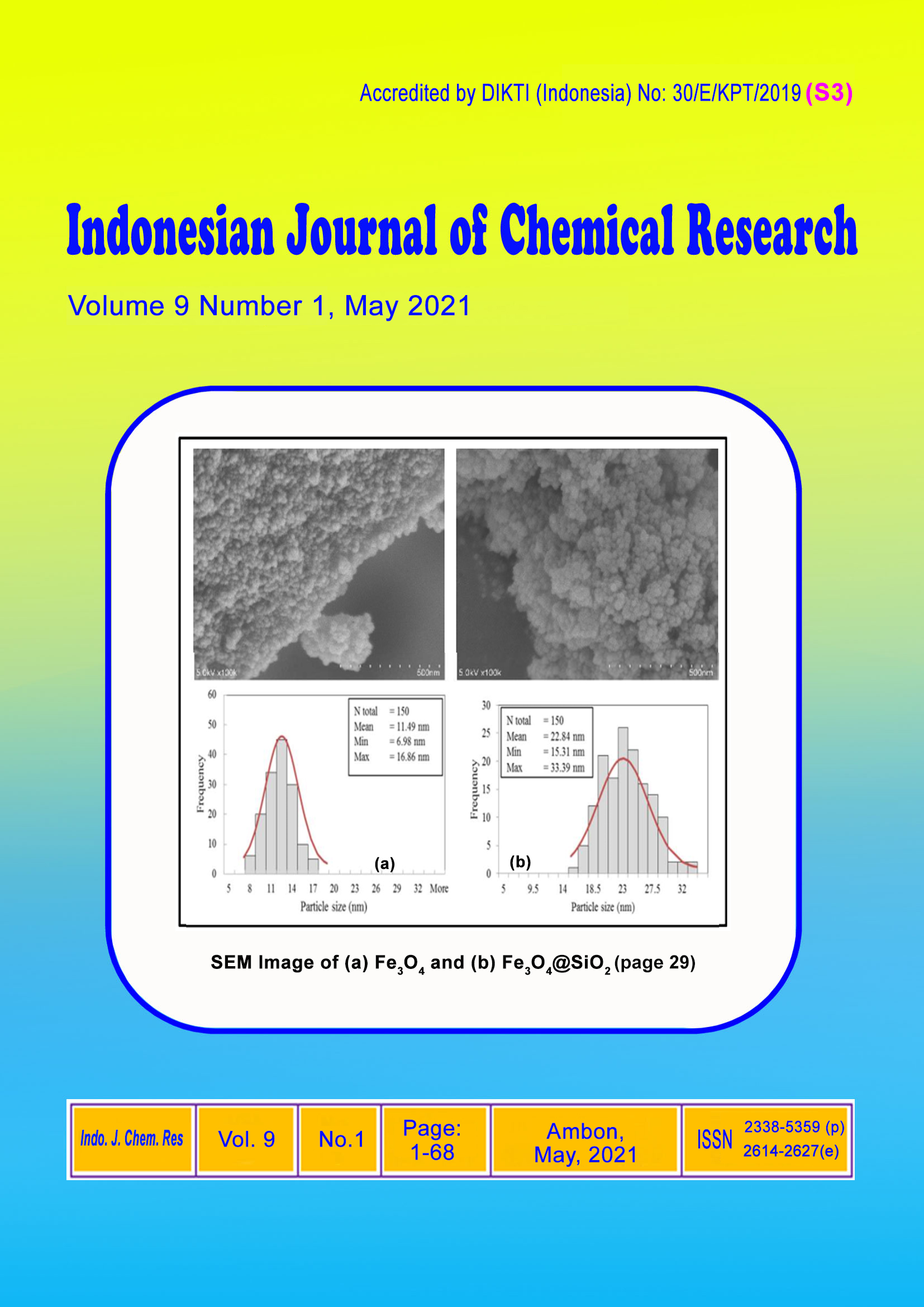Density Functional Theory for QSAR Antioxidant Compound Myristicin Derivatives
Abstract
This research was conducted to determine the molecular structure modeling and the quantitative relationship of the activity structure (QSAR) of substituted myristicin derivatives with electron donor groups such as -C6H5 (M1), -NH2 (M2), -Cl (M3), -F (M4), and -H (M5). The results of geometry optimization with the DFT (Density Fractal Theory) method or density functional calculations calculated with the density level of B3LYP/6-31G each obtained the total energy of each compound M1- M5: M1: 175.49 kcal/mol M2: 132.707 kcal/mol, M3: 115.701 kcal/mol, M4: 116.048 kcal/mol, M5: 121.377 kcal/mol. Determining the relationship between descriptors and the antioxidant activity (IC50) for basic structure myristicin compounds and five derivatives was carried out using SPSS 21. The results of the correlation analysis showed that there was a relationship between the descriptors and antioxidant activity. Determining the best QSAR equation model is done by analyzing multiple linear and multilinear regression using IBM SPSS 21. The results of multiple linear regression analysis or multilinear regression obtained for the best QSAR equation model are: Log P = -2.600 + (0.006) IW- (1.558) qC8 - (6.532) EHOMO + (0.014) PSA + (0.133) MD with n = 6, R = 1.000, R2 = 0.926, SE = 0.
Downloads
Copyright (c) 2021 Muliadi Muliadi, Mudzuna Quraisyah Basimin, Ahmad Muchsin Jayali

This work is licensed under a Creative Commons Attribution-NonCommercial-NoDerivatives 4.0 International License.
Authors who publish with this journal agree to the following terms:
- Copyright on any article is retained by the author(s).
- The author grants the journal, the right of first publication with the work simultaneously licensed under a Creative Commons Attribution License that allows others to share the work with an acknowledgment of the work’s authorship and initial publication in this journal.
- Authors are able to enter into separate, additional contractual arrangements for the non-exclusive distribution of the journal’s published version of the work (e.g., post it to an institutional repository or publish it in a book), with an acknowledgment of its initial publication in this journal.
- Authors are permitted and encouraged to post their work online (e.g., in institutional repositories or on their website) prior to and during the submission process, as it can lead to productive exchanges, as well as earlier and greater citation of published work.
- The article and any associated published material is distributed under the Creative Commons Attribution-NonCommercial-NoDerivatives 4.0 International License.






_copy1.png)










